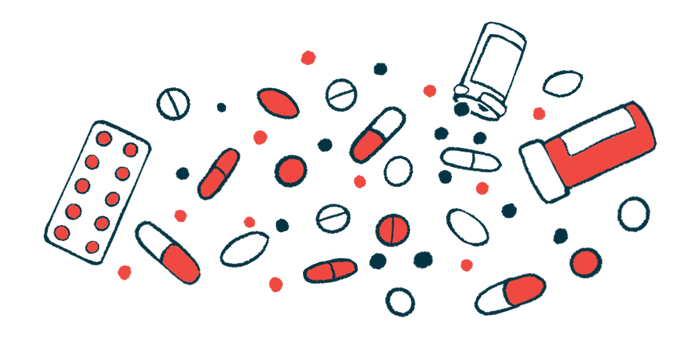Antibiotics in Combo Appear More Effective at Killing Bacteria in Lungs
Written by |

A combination of antibiotics may be more effective at killing harmful bacteria in the lungs of people with chronic obstructive pulmonary disease (COPD) who are having disease exacerbations, or flare-ups, than single-antibiotic therapies, a study based on a trial’s findings reports.
However, the study found no difference between combination and single-antibiotic therapies for symptom control.
The study, “Combination antibiotic therapy versus monotherapy in the treatment of acute exacerbations of chronic obstructive pulmonary disease: an open-label randomized trial,” was published in the journal BMC Infectious Diseases.
Exacerbations are episodes in which COPD symptoms suddenly worsen. Because they are commonly presumed to result at least partly from bacterial lung infections, antibiotics — medicines that kill bacteria — are commonly used to help manage COPD exacerbations.
However, there is no widespread consensus on the best antibiotic regimen for this purpose.
Now, a team led by researchers at Haiphong University of Medicine and Pharmacy in Vietnam conducted a clinical trial to compare two antibiotic regimens in people with COPD experiencing exacerbations.
The trial (NCT04879030) included 155 COPD patients who were divided into two groups. Patients in one group received beta-lactams — a common class of antibiotics that includes penicillin — as a monotherapy, that is, without any other medication. Patients in the other group received a combination therapy consisting of beta-lactams plus another type of antibiotic called fluoroquinolone.
The study was open-label, meaning that participants were aware of which treatment they were receiving.
“The main goal of this study was to compare the clinical and bacterial success of a combination of beta-lactam and fluoroquinolone antibiotics with that of beta-lactam monotherapy in adult patients with COPD exacerbations,” the researchers wrote.
After 20 days of treatment, levels of clinical success were similar, at about 88%, in both the monotherapy and combination groups. There was no significant difference between the groups. “Clinical success” was defined as a substantial easing or complete eradication of signs and symptoms, as assessed by a respiratory physician.
Rates of clinical success after 10 days of treatment were also similar, at about 60% in both groups. There were also no significant differences between the two groups in measures of lung function or symptom severity at either 10 or 20 days of treatment.
Although not statistically significant, researchers noted the rates of bacterial eradication were higher in patients on the combination therapy than in those given single-antibiotic treatment (96.7% vs. 88.6%).
The combination therapy appeared significantly better at killing specific types of bacteria that are known to cause lung disease, such as Acinetobacter baumannii and Pseudomonas aeruginosa.
Levels of C-reactive protein — a blood marker of inflammation — decreased by an average of 22.1 mg/L in the monotherapy group after 20 days of treatment. In the combination group, levels of this inflammatory marker dropped by significantly more (26.9 mg/L).
“There was no significant difference in clinical outcome on day 20 among patients with acute exacerbations of COPD treated with combination therapy and those treated with monotherapy. … However, the combination therapy group had a higher microbiological success rate,” the researchers wrote.
“Further research is required before combination therapy is routinely recommended,” the team wrote.





